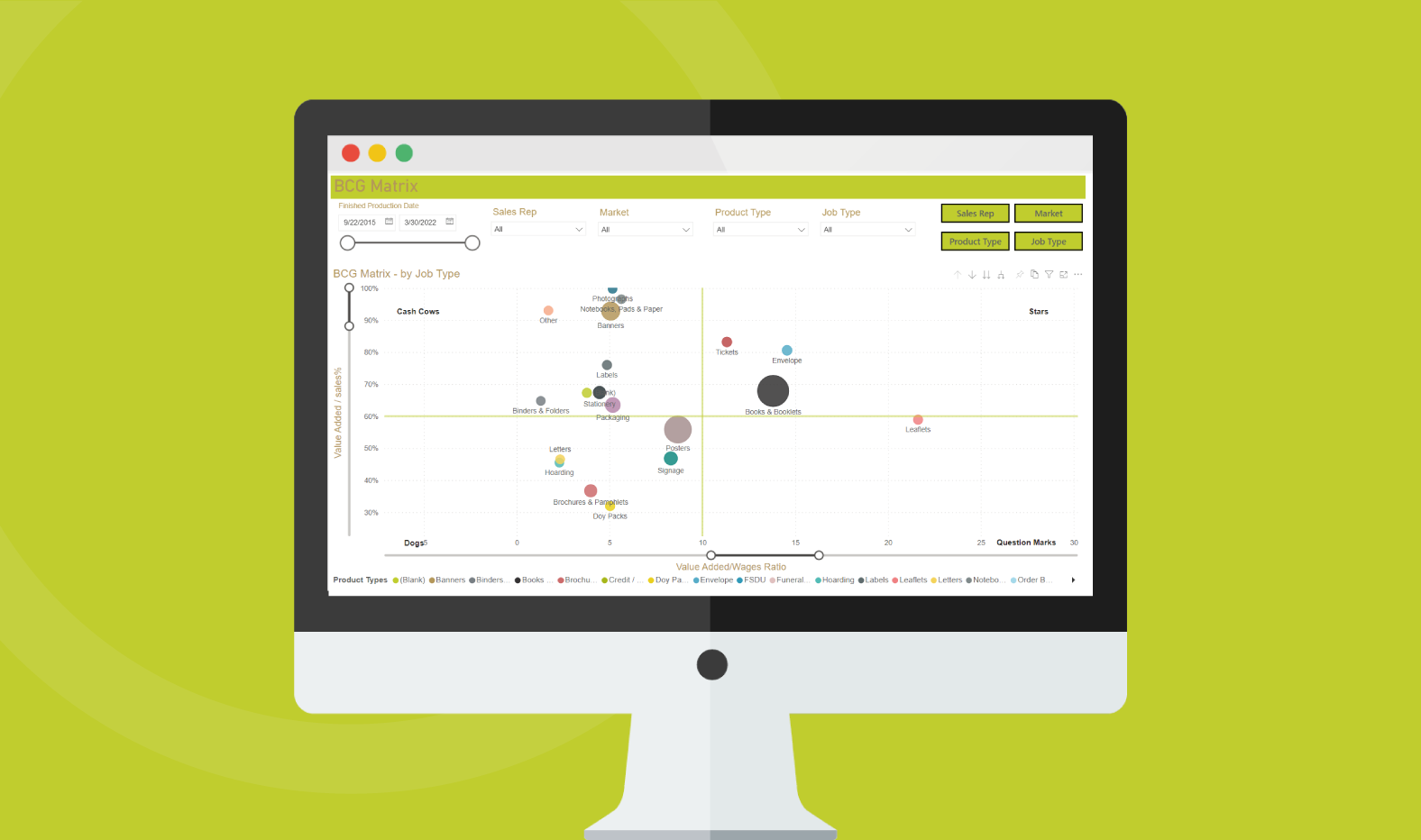3 ways MIS software helps printers & converters diversify products
Diversification in the printing industry is growing, and companies in every sector are dipping their corporate toes into areas beyond their core focus, or at least considering it. A recent article from Print Business explained that the percentage of printers either diversifying or planning to do so had increased from 80% in 2018 to 93% in 2022.
If you’re considering this as a strategy for your own company, you might be interested to learn how software can help. Here’s our 3 key ways that MIS solutions can help you diversify into other areas of print.

Data from your MIS can help reveal potential opportunities for diversification
If you have a gut feeling that diversification is the right move for your business, your MIS software can help you verify this.
Within your MIS, there’s a reservoir of data to help your business understand what’s working for you and where there might be opportunity to expand your offering. And there’s 2 ways you can get to this information:

Almost every MIS can generate reports and these can provide some great quality data about your business. As an example, users of our Tharstern Desktop software can generate…
- Utilization reports
- Product and Job Type reports
- Profitability of Jobs reports
These reports are a useful start to help you analyze the demand for the various products you manufacture, though there will be a fair bit of manual analysis involved here, while you use some of your deduction skills to identify your opportunities for diversification.

To make it a little easier and dig way deeper into your data, Business Intelligence (BI) dashboards are the future. You can read all about the value of BI Dashboards for analyzing business data in this article.
You can use BI software to create a BCG Matrix of the different types of products you manufacture and the various sectors you service. This visualization will really help you to see where to focus your attention in the future, and where there might be opportunity for diversification.

This analysis can also highlight any opportunity for bringing services in-house, or identify gaps in the market to take advantage of, e.g. perhaps you currently outsource your laminating work, but your analysis may reveal there’s opportunity to invest and bring this service in-house.
Using BI dashboards can also help you track and forecast growth once you’ve begun implementing your diversification strategy.
MIS software can calculate estimates for many different types of products and processes!
Every MIS works differently, and not all providers support different types of print within one product, but there are solutions out there that do. We’re very proud to say that our Tharstern Desktop product supports all print disciplines within the same application – litho, digital, wide format, labels and packaging. So our customers can quote for different types of products within one quote or order, without creating unnecessary paperwork and confusion for their own clients.

So if you do analyze your MIS data and make the decision to diversify your product offering, make sure that the MIS software in your business can support this diversification and that you can set it up to handle the new products and processes you will be working with.
Target customers with your new offering using CRM software
Once you’ve bought your new equipment and made sure your workflow is set up correctly, it’s time to find some customers for your new products!
If your MIS solution has a connected CRM system, you can use it to identify marketing opportunities within your existing database. If you’ve been keeping your CRM up to date, you’ll be able to filter your customers by sector and identify any potential interest in your new offerings.
For example, a commercial printer who has diversified into labels might filter their order data to identify any businesses in the health and beauty industry that may be interested in product labelling. And a packaging company that has invested in a wide format machine could filter their data to highlight opportunities from customers in the retail sector, who may need products for point of sale campaigns.

Once the list of customers has been created in the CRM, you can then run a marketing campaign to reveal your new products and analyze the results afterwards.
Data from your CRM software is also useful for monitoring the success of your new products. You can collect data on how many orders have been placed, by how many different customers and the overall value of these orders.
Need more help?
If you’d like any help with the analysis of your MIS software, we’d love to help you and walk you through how to create a BCG matrix using your MIS data.
You can also read our guide to Value Based Pricing, which delves into the BCG matrix in detail, and offers a step by step guide on how to create one.
Share this
You May Also Like
These Related Stories

Systemizing your print business part 1 - An introduction to Systemization

Systemizing your print business part 3 - Work on your business, not in it


